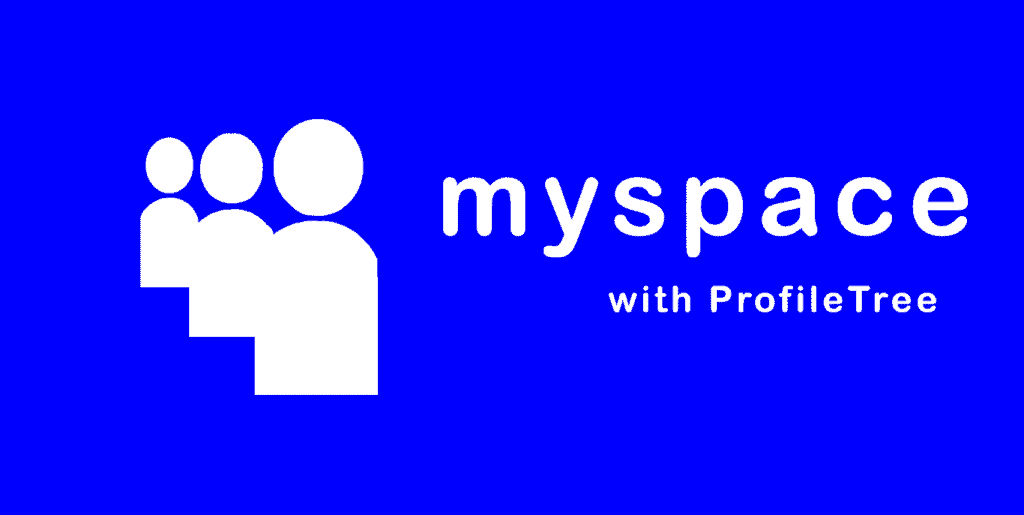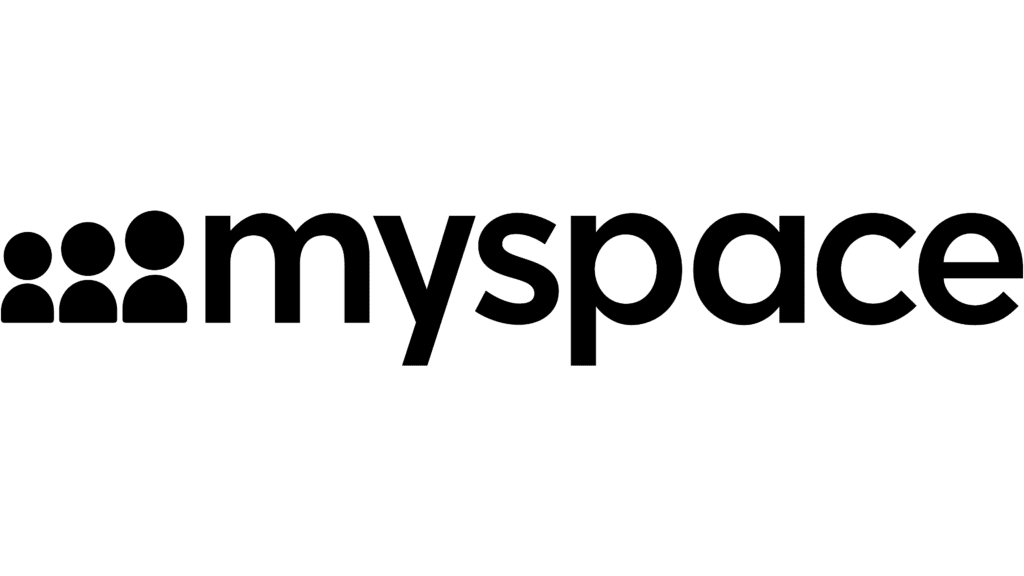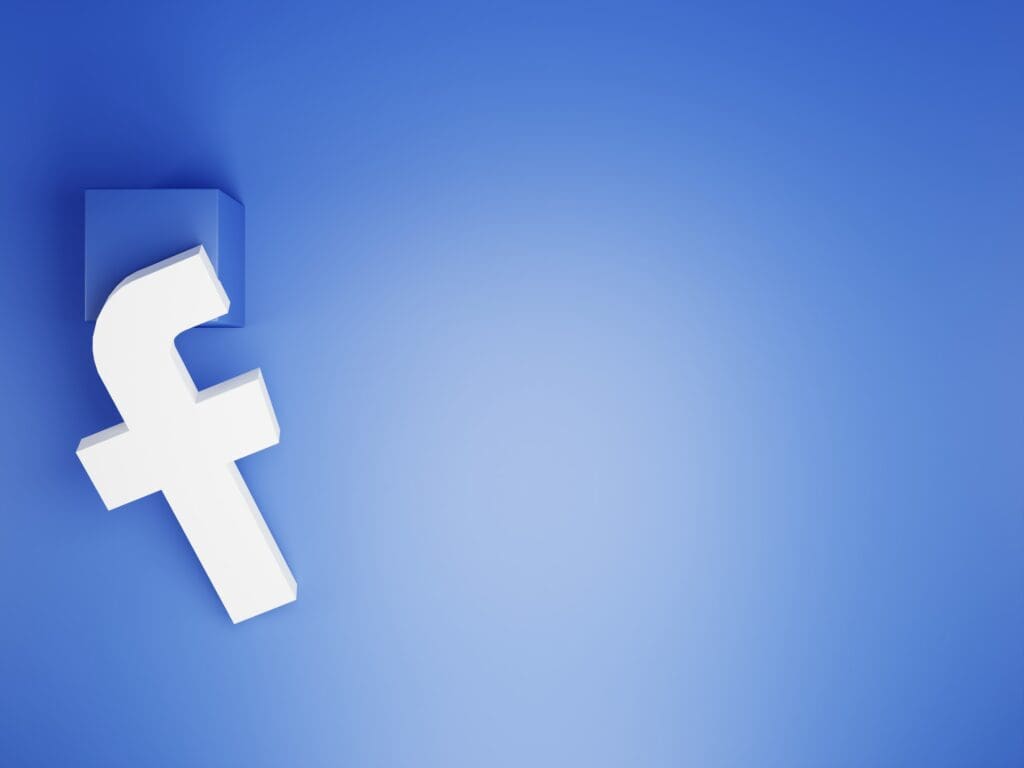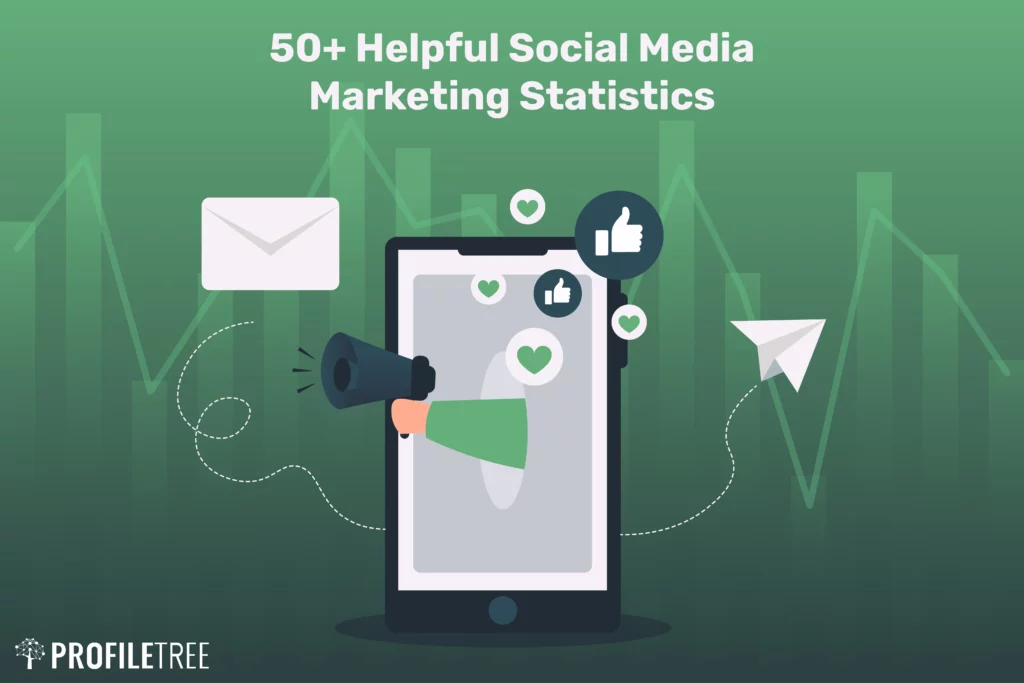In this article, we have explored the social media platform MySpace and its usage/engagement throughout the years. We regularly update it every so often, so that you know you’re receiving the most accurate and relevant information.
What is MySpace? And – the million-dollar question – is it still in use today? We think the answer could surprise you!
Originally designed for users to find and share great musicians from around the world, MySpace transformed into a giant of the social media world. It is even credited with helping to launch many musicians (including the Arctic Monkeys, Hollywood Undead and Lily Allen). to fame.
And today? Believe it or not, MySpace maintains a loyal following of users who aren’t ready to ditch the platform just yet! Let’s take a closer look at how the social media platform has changed and adopted throughout the years.

MySpace was once the dominant social networking platform, with billions of monthly page views and millions of registered users globally. However, its user count began to decline significantly from the late 2000s onwards, largely due to the rise of other social media platforms, such as Facebook.

Table of Contents
What was MySpace like at its peak?
During its peak years, MySpace was a major player in the social media market, with annual sales reaching up to $1.49 billion in 2009. However, it was never a profitable business, and its operating losses were significant. During its reign, however, MySpace looked a bit like this:
User Base:
In the mid-2000s, MySpace was the most visited social networking site in the world. At its peak, it had over 100 million monthly active users. In 2006, it surpassed Google as the most visited website in the United States.
Profile Customization:
One of the defining features of MySpace was the high degree of customization it allowed for user profiles. Users could edit the HTML/CSS of their profiles, which allowed for extensive personalization, including background images, colours, fonts, and layout. This was a major draw for users, as it allowed them to express their personality and creativity.
Music and Entertainment:
MySpace was a significant platform for music and entertainment. It allowed artists, both established and emerging, to create profiles and share their music directly with fans. Many artists, including some who became major stars, were discovered through MySpace. It was a critical platform for the music industry during this time.
Social Networking:
Users could connect with friends, post photos and videos, write blog posts, and send private messages. The concept of having “Top 8” friends (a feature where users could display a list of their top friends on their profile) was iconic and sometimes led to social drama among users.
Groups and Communities:
MySpace had various groups and communities that users could join based on their interests, hobbies, or affiliations. This feature allowed users to connect with like-minded individuals and engage in discussions.
Bulletins and Status Updates:
Users could post bulletins, which were messages that would appear in the feed of all their friends. This was a primary way people communicated en masse with their MySpace friends before the advent of the “status update” that is now common on social media platforms.
Business and Marketing:
Because of its massive user base, MySpace was also a platform for businesses and marketers. Many companies created profiles to promote their products and connect with potential customers.
Demographics:
In its heyday, MySpace had a diverse user base, including teenagers, young adults, bands, artists, and filmmakers. It was particularly popular among teenagers and young adults.
Cultural Impact:
MySpace had a significant cultural impact during its peak years. It was one of the first platforms where having an online presence became mainstream, especially for young people. It played a role in the rise of “internet celebrities” and was a significant part of internet culture in the mid-2000s.
In summary, at its peak, MySpace was a vibrant and highly customizable social networking platform that played a significant role in internet culture, particularly in the realm of music and entertainment. It was a place where people went to connect with friends, discover new music, and express their identity online.
MySpace: A History of Rise, Fall, and Unexpected Return
From Music Hub to Social Media Giant (2003-2008):
- August 2003: MySpace launches, initially focusing on music profiles and file sharing. Friendster’s decline leaves a void, and MySpace quickly captures the online social scene.
- 2005: MySpace becomes the most visited website in the US, surpassing Google and Yahoo. Music remains central, with artists like Arctic Monkeys and Paramore building fan bases on the platform.
- 2006: Acquisition by News Corporation for $580 million. Focus shifts towards advertising and monetization, leading to user discontent with cluttered interfaces and intrusive pop-ups.
- 2007: Introduction of The MySpace Transmissions, a series of live-in-studio recordings by established artists like Nine Inch Nails and My Chemical Romance. Developer platform launch allows third-party applications like RockYou and Photobucket, further boosting user engagement.
The Decline and Changing Landscape (2008-2011):
- 2008: Facebook surpasses MySpace in global unique visitors. MySpace struggles with technical issues, slow loading times, and spam.
- 2009: Justin Timberlake acquires a minority stake in MySpace, attempting to revamp the platform with a focus on music and video. However, user decline continues.
- 2011: Specific Media Group acquires MySpace for a fraction of its 2006 valuation. The platform undergoes significant redesigns and loses its focus on music, alienating its core user base.
Unexpected Revival and New Horizons (2012-Present):
- 2012-2019: MySpace operates under the radar, focusing on smaller niche communities and independent artists.
- 2019: Major data loss incident sparks public outcry and renewed interest in MySpace’s historical significance. The Internet Archive recovers and preserves a portion of the lost data.
- 2020-Present: Renewed focus on music and nostalgic appeal. MySpace partners with artists for exclusive releases and hosts online concerts. New features like music streaming and profile customization attract younger users.
Key Pivots and Leadership Changes:
- 2006: Acquisition by News Corporation marks a shift towards commercialization, leading to user dissatisfaction.
- 2009: Justin Timberlake’s involvement brings renewed focus on music, but ultimately fails to stem the decline.
- 2011: Acquisition by Specific Media Group signals a new direction for MySpace, focusing on niche communities and independent artists.
- 2019: Data loss incident and subsequent recovery efforts spark renewed interest in MySpace’s historical and cultural significance.
- 2020-Present: Focus on music and nostalgia, coupled with new features, attracts a new generation of users and hints at a potential comeback.
MySpace vs. Facebook: A Tale of Two Social Media Titans


Despite their shared history as pioneers of online social networking, MySpace and Facebook have taken vastly different paths. Here’s a head-to-head comparison across key factors:
| Factor | MySpace | |
|---|---|---|
| Demography | Younger, music-oriented, artistic. Attracts a niche audience interested in alternative cultures and self-expression. | Broader age range, appealing to diverse demographics with a focus on real-life connections and family. |
| Features | Highly customizable profiles, emphasis on multimedia like music and video, strong artist communities. Limited third-party app integration. | Streamlined interface, focus on news feeds, status updates, and messaging. Extensive third-party app integration, facilitating diverse functionalities. |
| Privacy | Historically lax privacy settings, leading to concerns about data security. Recent updates offer more control over profile visibility. | Evolved privacy features, allowing granular control over data sharing and user interactions. |
| Advertising | Early focus on intrusive banner ads and pop-ups, leading to user backlash. Current model incorporates targeted advertisements based on user interests. | More sophisticated advertising algorithms, offering targeted ads and sponsored content for businesses. |
| Revenue Model | Primarily advertising-based, with limited success in generating additional revenue streams. | Diversified revenue model, including advertising, in-app purchases, and premium subscriptions. |
| Mobile Presence | Relatively late entry into the mobile app space, lagging behind Facebook’s dominance. | Strong mobile app presence, fostering user engagement and accessibility. |
| Overall Focus | Expressive self-presentation, music discovery, and niche communities. | Connecting with friends, family, and broader communities, sharing news and updates. |
Additional points to consider:
- Community: MySpace fosters a stronger sense of community among its niche user base, while Facebook caters to a broader audience with diverse connections.
- Cultural Impact: MySpace played a significant role in shaping online music culture and influencing the early development of social media.
- Future: MySpace faces an uphill battle against Facebook’s established dominance, but its renewed focus on music and nostalgia could attract new users and solidify its niche position.
MySpace as of 2023
As of 2023, MySpace is still operational, but it has undergone significant changes since its heyday in the mid-2000s, some even comparing it to a shadow of its former self, with a significantly reduced user base.
Here are some key points about the current status of MySpace:
User Base
MySpace still has a user base, although it is much smaller compared to its peak years. In June 2022, MySpace had 6.9 million website visits. While the majority of web analytics engines have stopped tracking the site’s user count since its collapse, there are still millions of people using MySpace as of 2023.
Rebranding
Although it’s not a major new look, MySpace has been rebranded to “Myspace” (with an uncapitalized “s”). It also has a much sleeker logo compared to the original that is pasted below.

Content and Features
Users in various countries, especially within the United States, still regularly log on to the site to get news, listen to music, watch videos, and engage in other activities that are typical of a social media consumer.
Global Reach
The United States is the top country in terms of the number of Myspace.com visitors, accounting for 48.63% of the total. Other countries with notable user bases include the United Kingdom, Germany, India, and Canada.
Ownership
MySpace has changed ownership several times. As of 2023, Myspace and its original holding company were sold to Viant Technology LLC, but by the time you’re reading this, it could be different owners.
MySpace in 2020
By 2020, MySpace is no longer a major player in the social media landscape. It had undergone several transformations and rebranding attempts to try to regain its former glory, but it struggled to recapture the attention of users.
MySpace – the Essentials
On MySpace you can create a full profile for yourself to allow the sharing of images, posts, your own music and others music. You can also chat to friends and strangers in forums.
To gain access to MySpace you don’t need to have an account, but it is definitely recommended if you access these main features.
To set up an account, you can sign up with Facebook, Twitter or your own personal email. The site will then ask you to choose a username. If another user has chosen a username, you’ll be asked to pick something different.
MySpace will then ask you why you’re on the platform and give you around 20-30 options from a musician, photographer, designer and much more. You can choose up to five options, and this will form the basis of your profile.
You can set up a bio, profile picture and add your own site (if you have one) to your profile.
Best Features of MySpace
Throughout MySpace you’ll find some great features to help promote yourself, your photos and your music.
MySpace for Music
MySpace was originally created to find many great artists from around the world. On the platform, you can find many different genres on the platform, with the main genres being pop, rock, rap, metal and r&b. In a way, it almost works like Spotify and iTunes as you can find many famous and known artists like Taylor Swift, Ed Sheeran, Queen and much more on the site.
One of the best parts of the music feature found on the platform comes by way of the search and filters. This will show the top songs and artists from your chosen genre. You can also search for certain artists and songs within the search bar.
It’s very simple and easy to upload your own music and albums to the site and your profile. When uploading a song you can add a title, images for the song as well as many other details. You can also upload full albums to your profile, with an album cover and all the other details you need such as details of the album and genre(s) of the album.
MySpace Insights
MySpace boasts its very own insights and analytics for your profile/site. The insights feature takes your entire profile into consideration, including photos and your music (mixes).
You can check specifically the analytics of different features within MySpace. This means you can see how a specific image or mix is doing on your profile. You’re also able to check the audience to your site and if they’re active or influential users.
Posting on MySpace
You can add a song an individual post OR an image/ video users can engage with. But you can’t do both.
You can also create a portfolio for yourself where you can add images, mixes, songs, any of your albums and also videos. This is great if you’re a musician as you can post a specific song, show which album it can be found in and also link a music video, all in one place.

Should I Still Use MySpace?
Nowadays there are other platforms musicians and music fans may turn to for finding and promoting new music. These include the likes of Spotify, Deezer and even YouTube. So, if you’re a musician it may not be worth your time to post on the site. BUT it is still a great place to have a roundup of all your content and it is easy to share with others on the site.
Could this make the site worthwhile for you? There’s only one way to find out…revisit MySpace to discover if there’s enough left on this former social media essential to tempt you into returning!
MySpace Search Old Profiles
In its prime, MySpace allowed users to create profiles, connect with friends, and share music, photos, and other content. However, the platform’s popularity declined over the years, and many users moved on to other social media platforms.
If you’re interested in finding old MySpace profiles or content, there are a few ways for doing so.
Search on MySpace
You can try searching for the specific MySpace username or display name of the person you’re looking for on the MySpace platform. The profile might still be there but keep in mind that due to privacy settings or the passage of time, not all profiles or content may be accessible.
Archived Websites
There are web archive services that may have captured snapshots of MySpace profiles and pages from the past. Websites like the Internet Archive’s Wayback Machine might have saved some of this content.
Specialized MySpace Archives
Some websites and online communities focus on archiving or preserving old MySpace content. These might include fan sites, nostalgic communities, or projects dedicated to preserving internet history, just try briefly Googling what it is you’re searching for.
Myspace FAQs: Unraveling the Mysteries
Q: What features does Myspace have?
Myspace offers a blend of nostalgic charm and modern functionality. Here are some highlights:
- Highly customizable profiles: Express yourself with custom layouts, background images, and music.
- Music focus: Discover new artists, listen to playlists, and even host online radio shows.
- Video sharing: Upload and share your own videos or watch creative content from others.
- Blogging and forums: Share your thoughts and connect with like-minded individuals through blogs and forums.
- Messaging and groups: Chat with friends, join groups based on your interests, and build online communities.
Q: Who owns Myspace now?
Specific Media Group acquired Myspace in 2011. They’ve focused on reviving the platform’s core music-oriented identity while attracting new users with fresh features and updates.
Q: What data does Myspace collect on users?
Myspace follows standard data collection practices like IP address, browsing history, and basic user information. They utilize this data for targeted advertising and to improve user experience. However, they offer options to control your privacy settings and manage your data.
Q: Can I still access my old Myspace account?
Good news! Myspace underwent a data recovery effort in 2019, allowing access to most accounts created before 2016. Simply visit myspace.com and log in using your old credentials. If you encounter difficulties, their support team can assist you.
Bonus FAQs:
- Is Myspace safe? Myspace utilizes security measures like data encryption and password protection. However, it’s important to practice basic online safety like using strong passwords and avoiding suspicious links.
- How can I monetize my Myspace? Myspace currently doesn’t offer direct monetization features for users. However, creators can build a following and potentially attract sponsorships or collaborations through their activities on the platform.
- Is Myspace making a comeback? While predicting the future is tricky, Myspace’s recent focus on music and nostalgia, coupled with growing user engagement, suggests a potential resurgence.
Our FREE ProfileTree knowledge archive
Our FREE ProfileTree knowledge archive… What is IGTV | Top Hashtags on Instagram | Instagram Campaign | The Best Instagram Hashtags | Instagram Likes | What is Social Media | TweetDeck User Guide | How to Make Money Online | YouTube Monetizing | Video Marketing | Get Verified on Twitter | Twitter Dimensions
Unmissable QUICK READ: What Is? guides… Blogger | LinkedIn | Instagram | Pinterest | Website | WordPress | Web Designing | Social Media | Logo | Blog | Social Media Strategy | Twitter | Photoshop | Facebook Live | Hashtag | Twitter Handle | Snapchat | Snapchat Geofilter | Facebook | YouTube | Hootsuite | Tumblr | Content


